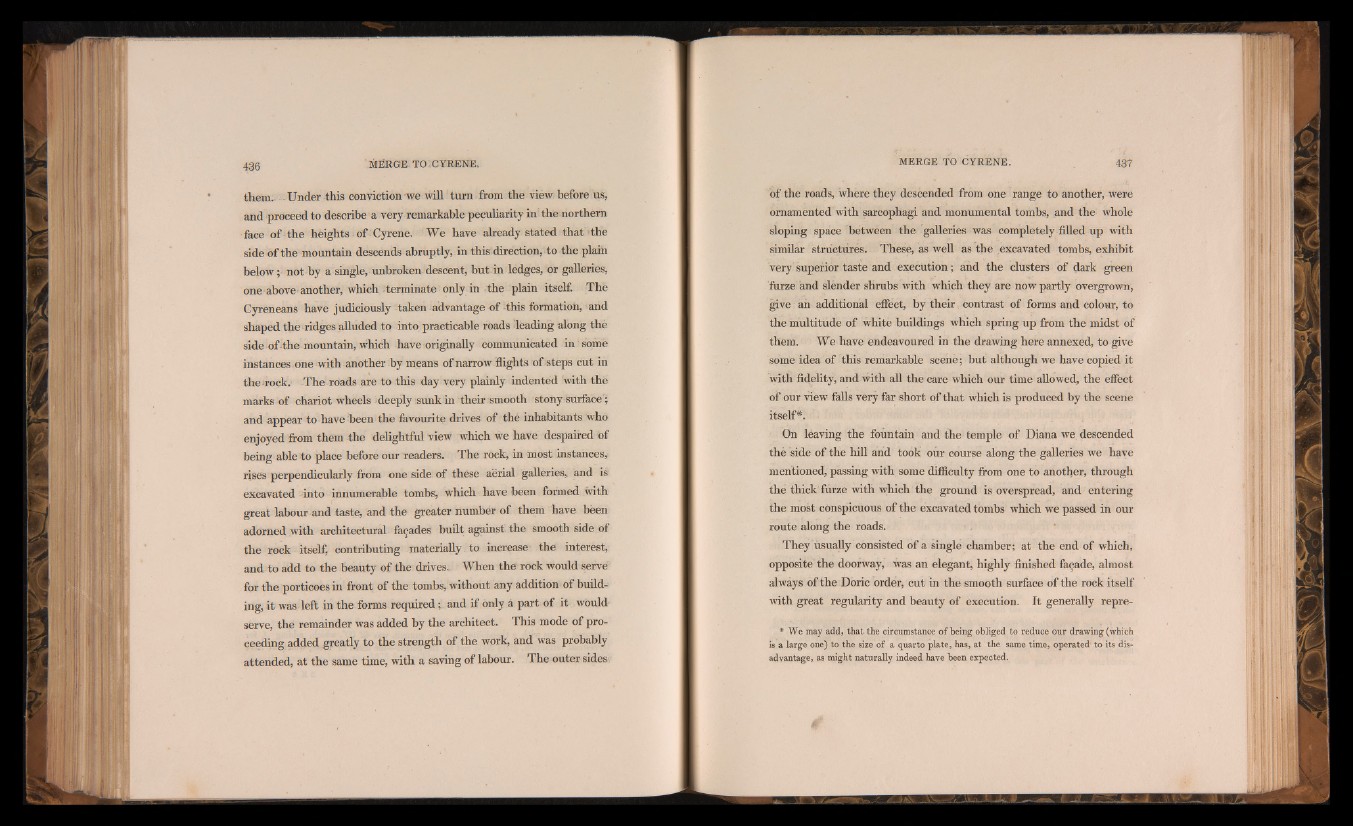
them. Under this conviction we will turn from the viéw before us,
and proceed to describe a very remarkable peculiarity in the northern
face of-the heights of -Cyrene. We have already stated that »the
side of the mountain descends abruptly, in this: direction, to the plain
below; not by a single, unbroken descent, but in ledges, or galleries,
one above another, which terminate only in the plain itself. The
Cyreneans have judiciously taken advantage of -this formation, arid
shaped the ridges alluded to into practicable roads 'leading along thé
side of-the mountain, which have ^originally communicated in soriie
instances one with another by means of narro w flights of steps cut in
the rock. The roads are to this day very plainly indented with thë
marks of chariot wheels ^deeply sunk in their smooth storiy surface ;
and appear to have been the favourite drives of thé inhabitants who
enjoyed from them the delightful view which we have despaired of
being able to place before our readers. The rock, in most instances,
rises perpendicularly from one side of thèse aërial galleries, and is
excavated into innumerable tombs, which have been formed with
great labour and taste, and the greater number of them have been
adorned with architectural façades built against the smooth side of
the reck itself, contributing materially to increase' the interest,
and to add to the beauty of the drives.. When the rock would serve'
for the porticoes in front of the tombs, without any addition of building,
it was left in the forms required ; and if only â part of it would'
serve, the remainder was added by the architect. This mode of proceeding
added greatly to the strength of the work, and was probably
attended, at the same time, with a saving of labour. The outer sides
of the roads, where they descended from one range to another, were
ornamented with sarcophagi and monumental tombs, and the whole
sloping space between the galleries was completely filled up with
similar structures. These, as well as the excavated tombs, exhibit
very superior taste and execution; and the clusters of dark green
furze and slender shrubs with which they are now partly overgrown,
give ari additional effect, by their contrast of forms and colour, to
the rimltitude of white buildings which spring up from the midst of
them. We have endeavoured in the drawing here annexed, to give
some idea of this remarkable scene; but although we have copied it
with fidelity, and with all the care which our time allowed, the effect
of our view falls very far short of that which is produced by the scene
itself*.
On leaving the fountain and the temple of Diana we descended
thé side of the hill arid took our course along the galleries we have
mentioned, passing with some difficulty from one to another, through
thé thick furze with which the ground is overspread, and entering
the most conspicuous of the éxcavated tombs which we passed in our
route along the roads.
They usually consisted of a single chamber; at the end of which,
opposite the doorway, was an elegant, highly finished façade, almost
always of the Doric order, cut in the smooth surface of the rock itself
with great regularity and beauty of execution. It generally repre-
* We may add, that the circumstance of being obliged to reduce our drawing (which
is a large one) to the size of a quarto plate, has, at the same time, operated' to its disadvantage,
as might naturally indeed have been expected.